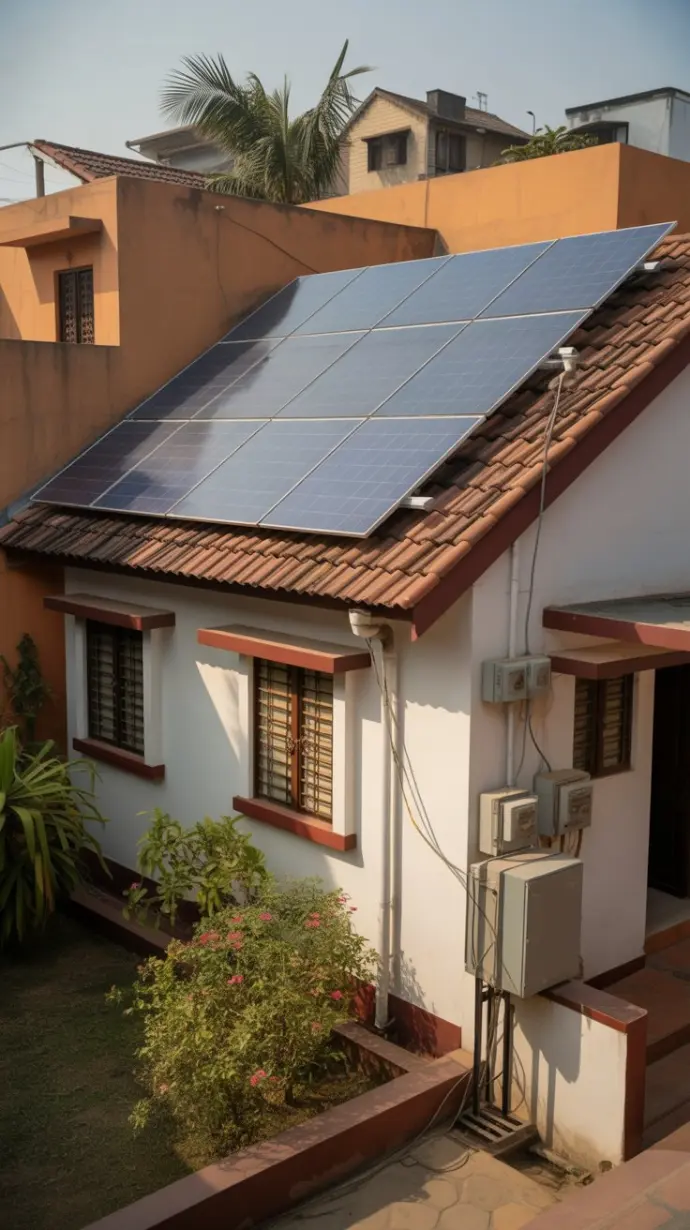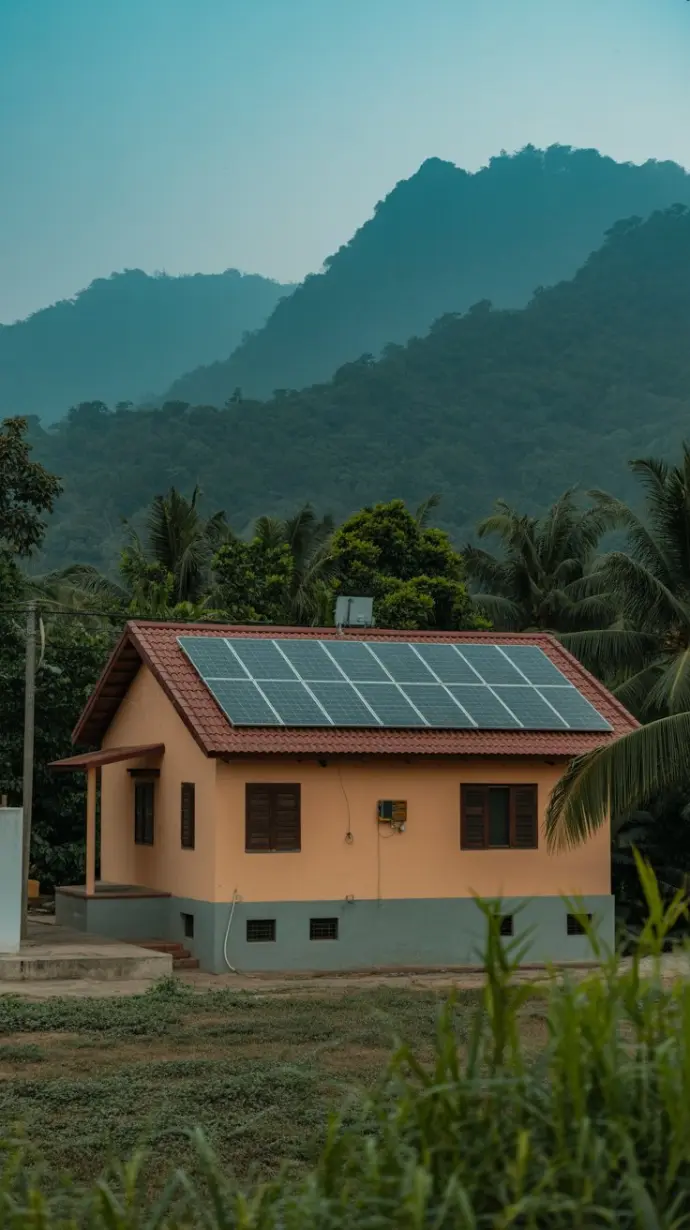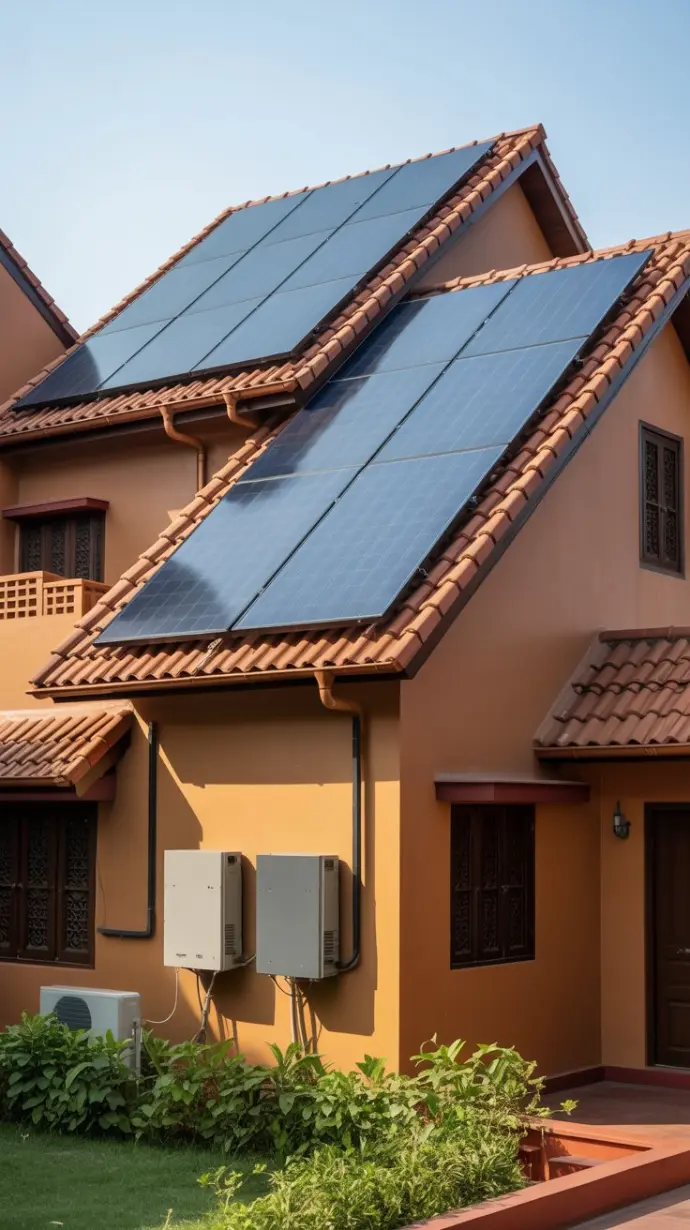— Solar Power Generating System —
A solar power system converts sunlight into electricity, cutting energy costs and emissions.
In India, subsidies up to 40% make it an affordable and eco-friendly choice.

On Grid Solar System
An off-grid solar system operates independently from the main electricity grid. It generates power from sunlight using solar panels and stores the excess energy in batteries, ensuring uninterrupted electricity supply even during power cuts or in remote areas without grid access.
Working
Solar Panels capture sunlight and convert it into DC electricity.
The charge controller regulates the power flow to protect the batteries from overcharging.
Batteries store the electricity for later use, especially at night or during cloudy weather.
The inverter converts stored DC power into AC electricity for running household or industrial appliances.
This self-sustaining system ensures continuous power, completely independent of the utility grid.
Benefits
Energy Independence: Works without reliance on the electricity grid.
Reliable Power Supply: Ideal for rural or remote areas with frequent outages.
Cost Saving: Reduces diesel or generator use, lowering long-term energy costs.
Eco-Friendly: Uses clean, renewable solar energy.
Low Maintenance: Durable components ensure long-lasting performance.
The Government of India, through the MNRE and State Renewable Energy Agencies, provides up to 40% subsidy on residential off-grid solar systems. This makes installation more affordable and encourages the adoption of renewable energy across the country.

Off Grid Solar System
An on-grid solar system is directly connected to the main electricity grid. It allows users to generate their own power through solar panels and export any excess electricity back to the grid, earning energy credits through the net metering system. It’s the most popular and cost-effective solar setup for homes, offices, and industries in India.
Working
Solar Panels capture sunlight and convert it into DC electricity.
The solar inverter converts this DC power into AC power used by household or industrial appliances.
When power generation exceeds usage, the excess electricity is fed into the grid, and users receive credits or reduced bills through net metering.
During low sunlight or night hours, electricity is drawn back from the grid automatically.
This seamless exchange between solar power and the grid ensures continuous supply without the need for batteries.
Benefits
Cost-Effective: No battery requirement makes it cheaper to install.
Reduced Bills: Save up to 90% on electricity costs through net metering.
Easy Maintenance: Simple design with minimal upkeep.
Reliable Power: Draws power from the grid when solar generation is low.
Eco-Friendly: Promotes clean and renewable energy use.
The Government of India, through the MNRE and State Renewable Energy Agencies, offers up to 40% subsidy on residential on-grid solar systems up to 3 kW and around 20% for systems between 3–10 kW. This makes solar adoption more affordable and supports the nation’s shift toward sustainable energy.

Hybrid Solar System
A hybrid solar system combines the features of both on-grid and off-grid systems. It is connected to the main electricity grid while also having battery storage for backup. This setup ensures continuous power supply — using solar energy during the day, storing excess in batteries, and drawing from the grid when needed. It’s ideal for areas with frequent power cuts but access to the grid.
Solar Panels absorb sunlight and generate DC electricity.
The hybrid inverter converts DC into AC power for household or industrial use.
Excess energy is first used to charge the battery bank and then exported to the grid through the net metering system.
During the night or a power outage, stored energy from the batteries powers the connected load, ensuring uninterrupted supply.
This smart combination of grid connection and battery backup offers both reliability and energy independence.
Uninterrupted Power Supply: Works even during grid failures.
Dual Advantage: Uses both grid and battery for maximum efficiency.
Reduced Bills: Earn credits through net metering while saving on power costs.
Long-Term Savings: Lowers dependency on the grid and diesel generators.
Eco-Friendly: Promotes the use of clean, renewable solar energy.
The Government of India, under the MNRE and State Renewable Energy Agencies, offers up to 40% subsidy on hybrid solar systems for residential users (up to 3 kW) and around 20% for larger capacities. This makes hybrid systems an affordable and sustainable choice for homes and businesses seeking reliable solar power with backup.